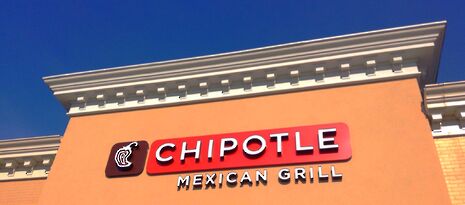Bacteria Bouquet I: E. coli
In the first of a new series looking at the strange world of microbiology, Zi Ran Shen examines the humble E. coli bacterium

Whenever E. coli is mentioned in the news, images of victims sitting by the sink violently emptying the contents of their stomachs are conjured up. Since 1992, when more than 600 people were hospitalised in one outbreak, E. coli has been put on the map as the bacteria that’s up to no good. But is that true? This week in the Bacteria Bouquet, E. coli will show you its gentle side and why you can’t live without it. From secreting vitamin B to producing insulin, these little microbes have contributed far more to society than meets the eye.
E.coli was discovered in 1885 by a German paediatrician named Theodor Escherich. He was of the belief that bacteriology could be the solution to the many ailments which plagued children. Being of that belief, he rooted around for bacteria in the faeces of children with gastrointestinal distress and stumbled upon a rod-shaped bacteria, which was E. coli. Little did he know that these bacteria would go on to become one of the most important tools in modern microbiology.
The most infamous E. coli strain has to be the strain O157:H7, which recently made front page news as the perpetrator of the Chipotle outbreak earlier this year, when 60 people were hospitalised. In this manner, E. coli O157:H7 has been overshadowing its brothers and sisters for centuries. In fact, the most common types of E. coli are the ones that are living inside you right now. A healthy profile of gut flora will always have some E. coli strains. If you’ve even taken a probiotic pill or powder to help digestion, guess what, you ate some E. coli. On top of maintaining a healthy digestive system, multiple studies have shown that non-pathogenic strains can be used in lieu of traditional medicine to treat bowel inflammations. As a decrease or absence of E. coli is a sign of Crohn’s disease, I am quite happy to have these critters colonise my intestines.
Not only are they literally digesting things for you every day, E. coli are also a useful biotechnological tool that has left a mark in modern lifestyle. Many life-saving drugs, such as insulin (for treating diabetes), glucagon (for treating hypoglycaemia), Preotact (for preventing osteoporosis), and Betaferon (for treating multiple sclerosis) are being produced by genetically engineered E. coli. Currently, E. coli is producing medicine that helps treat over 250 million people around the world.
If that doesn’t impress you, maybe academic prestige will. E. coli has contributed to a grand total of 11 Nobel prizes, two of which were won by Cambridge affiliates. Today, most biology-related labs use E. coli as their go-to bacteria. Its predictable life cycle, easy-to-manipulate genes, and ease to grow makes it the ultimate model organism. We owe most of our current understanding of life to these seemingly insignificant bacteria.
If you’re already sold on how awesome E. coli is, there is even more where that came from. These bugs have been tweaked to make biofuel, a renewable form of energy that could be the solution to climate change. Using cheap organic sources, biofuel is already slowly replacing fossil fuels such as diesel. E. coli could possibly be the answer to climate change catastrophe.
This week I’d like to take a moment to thank the humble friends in our guts, behind our medicines, and in the world around us. Without it our lives would be significantly worse off. Hopefully this week’s Bacteria Bouquet has given you a greater understanding of the versatility and ubiquity not just of E. coli, but of bacteria as a whole. Join us in a couple of weeks as we uncover the mysteries of another species of bacteria from the bouquet around us.
 News / SU reluctantly registers controversial women’s soc18 December 2025
News / SU reluctantly registers controversial women’s soc18 December 2025 News / CUP announces funding scheme for under-represented academics19 December 2025
News / CUP announces funding scheme for under-represented academics19 December 2025 Features / Should I stay or should I go? Cambridge students and alumni reflect on how their memories stay with them15 December 2025
Features / Should I stay or should I go? Cambridge students and alumni reflect on how their memories stay with them15 December 2025 Fashion / The art of the formal outfit 18 December 2025
Fashion / The art of the formal outfit 18 December 2025 News / Dons warn PM about Vet School closure16 December 2025
News / Dons warn PM about Vet School closure16 December 2025









